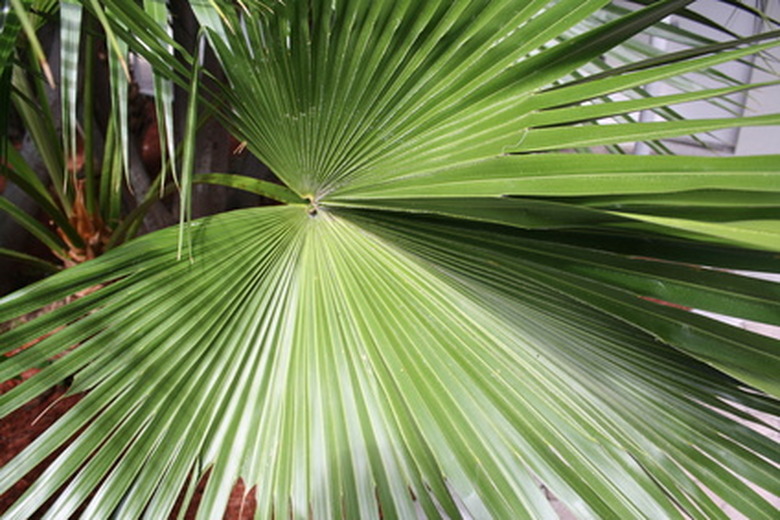Sago Palm Diseases
The sago palm commonly grows in the southern region of the United States. The tree can grow anywhere from 20 to 32 feet and provides the starch sago, which is a major ingredient in the noodles and breads for the people of New Guinea. The tree is vulnerable to several diseases, which are also prevalent in the southern region.
Armored Scales
Sago palms are vulnerable to serious infestation from armored scales, such as California red scale and Oleander scale. When infested, leaves may wither and die, the palms growth may become stunted and younger trees are more likely to die. These pests can be eliminated by applying narrow-range horticultural oil, chemical sprays or natural predators, such as ants.
Thielaviopsis Trunk Rot
The fungus Thielaviopsis paradoxa is known to cause a common trunk rot in sago palms which will eventually lead to a collapse of the leaves and top of the plant. There is no known cure for Thielaviopsis trunk rot; the only solution is to remove and destroy the tree.
- The sago palm commonly grows in the southern region of the United States.
- The fungus Thielaviopsis paradoxa is known to cause a common trunk rot in sago palms which will eventually lead to a collapse of the leaves and top of the plant.
Ganoderma Butt Rot
Ganoderma butt rot is a lethal disease for all palms. There is no known cure for the disease, which is common in southern Georgia, Flordia and South Carolina. Ganoderma butt rott is caused from the fungus Ganoderma zonatum, and according to the University of Florida the infected tree should be removed or destroyed immediately to prevent the spread of the disease. Once the tree has been removed, it is common that the disease, which thrives in soil, may infect another tree planted in the same location.
Phytophthora Rots
The Phytophthora fungi is known to infect the sago palm with collar, root, crown and foot rots. The symptoms of infection are discoloration of the bark and sap ooze which eventually will kill the tree. The only option is to remove and destroy the infected plant, remove its root system and add a better-draining soil. A new tree can then be planted to replace the sago palm.
- Ganoderma butt rot is a lethal disease for all palms.
- Ganoderma butt rott is caused from the fungus Ganoderma zonatum, and according to the University of Florida the infected tree should be removed or destroyed immediately to prevent the spread of the disease.
